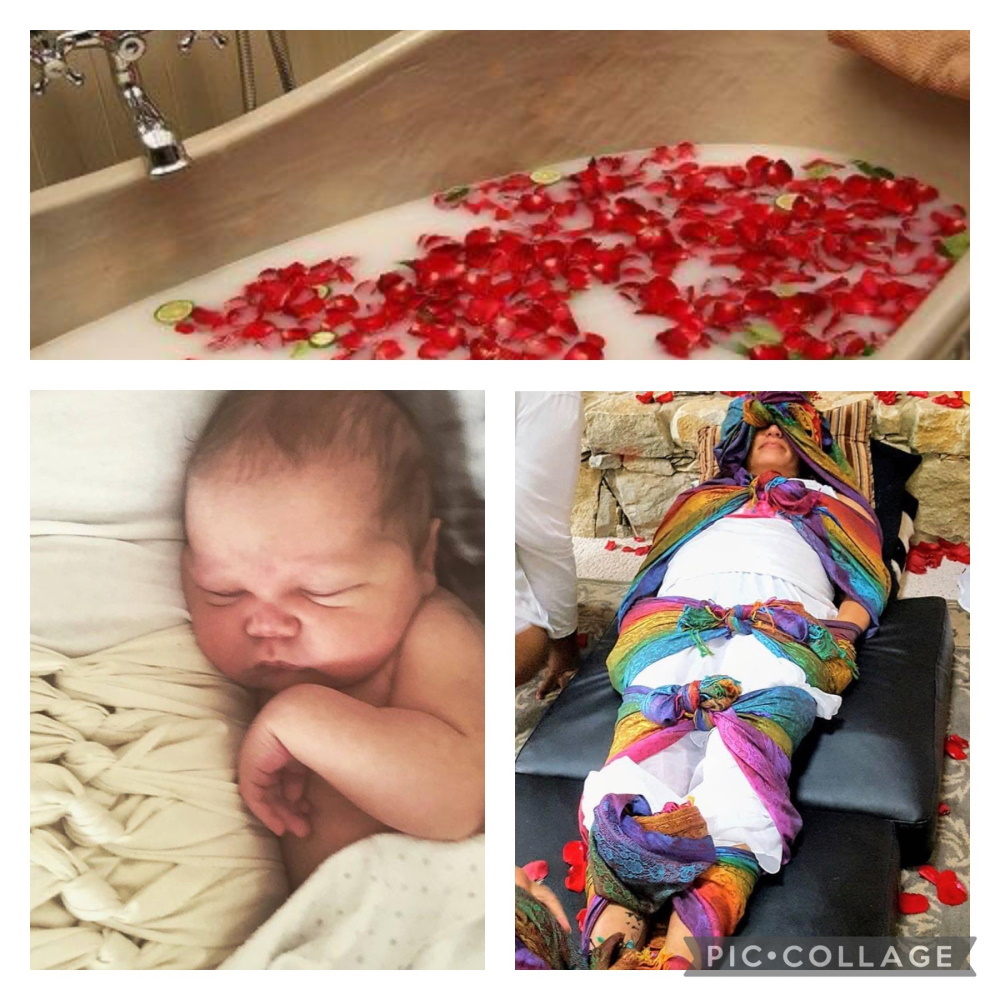Nurturing the Mother – the Sealing Ceremony and Belly Binding
Pregnancy and childbirth is a magical experience. It can also physically and emotionally deconstruct you in a way no other experience can. And once the birth is over, it can seem like all eyes, and care, turn to the baby. A ceremony, much like the ones our ancestors may have held, honours the role you have played in sharing your body and bringing forth new life, and is an important part of helping you restore your balance, allowing you to move into motherhood with grace and ease.
One of the most beautiful ways of doing this is through the Sealing Ceremony and Belly Binding, marking the transition from maiden to mother, a rite of passage which must be marked, honoured, and valued.
What is the Purpose of a Sealing Ceremony?
During childbirth a woman’s body is all about opening up to allow new life to come into the world. This can leave a woman, who has shared her body with her baby for nearly ten months, feeling empty and vulnerable.
A Sealing Ceremony is a way of honouring the role of your body, and returning it fully to your own possession.
The Sealing Ceremony
Whilst a Sealing Ceremony can be done anywhere from about 6 hours after birth, I recommend waiting till around 2-6 weeks postpartum. This ceremony is designed to replenish and nurture both your body and your mind, and celebrate your journey from woman to mother.
First a calming, nurturing space is set up using candles, essential oils and a space cleansing spray to dispel stagnant energy and protect your aura.
You will then sink into a Cleopatra Milk Bath or a Healing Herb Bath. These fragrant baths are full of ayurvedic herbs chosen specially to heal and relax the body.
After the bath you will be massaged with luxurious scented oil, with special attention to your womb space, before being wrapped in cloths. Heated flax lavender packs will be tucked around your body. I then bestow blessings as you are firmly ‘tucked in’ with warm blankets. Now is the time to rest, enveloped in warmth, and to reflect on your journey through pregnancy and into motherhood.
When you are ready your belly will be massaged with warming Ayurvedic oil and you will be encased in either a Bengkung or modern Belly Bind.
Finally, healing postpartum tea or ceremonial cocoa is drunk as we sit together acknowledging your birth experience, and stepping into motherhood feeling heard, strong and supported.
What is Belly Binding?
Belly Binding is an ancient tradition that has been practiced for hundreds of years in many cultures around the world.
During pregnancy your organs move and many of your muscles separate in order to accommodate your growing baby. Binding your belly helps your body heal and recover. Organs are gently encouraged back into their original positions, and stretched muscles are supported as they heal. Your pelvic floor, in particular, comes under a lot of stress during pregnancy, and binding helps support this group of muscles as they return to their normal strength.
Generally, your muscles should be fully healed around two months post-birth. Occasionally, muscles don’t heal as quickly as they should. This is called Diastasis Recti. Using a Bengkung Belly Bind, in combination with some form of physical therapy will help with this condition.
Types of Belly Binding
Traditionally, belly binding has been done using a soft cloth around 14-15 metres long, which is usually brightly coloured. This is wrapped and knotted around the body from the hips to under the breasts.
There are now ‘preconstructed’ belly binds available that are made from traditional fabric, and include the knots, but are fastened with Velcro. These are ideal if you will be putting the belly binding on yourself without assistance, as learning to wrap the traditional bindings can be tricky, not to mention time consuming.
How to Belly Bind
It is important to get the amount of pressure in belly binding right. You are looking for firm but gentle support. If you can’t sit down, or you are having trouble taking normal breaths, the binding is too tight. In fact, it’s a good idea to get advice from me on just how firm it needs to be.
Can I use Belly Binding if I had a C-Section?
Belly binding can be particularly helpful if you’ve had a C-Section, as it will support the muscles around the incision site as they knit back together. However, it is important to wait until the wound is dry and healed before binding, so check with your midwife or obstetrician for clearance first.
When Should I Bind?
After a vaginal delivery you can start wearing a belly bind as soon as you feel ready. Ideally, it should be worn 12 hours a day – you can even sleep in it if you want to – for around 6 weeks, although you can continue to wear it for up to 12 if you wish.
As I mentioned earlier, if you have had a c-section, you should wait until your wound is sufficiently healed before you start binding, but it’s likely to be around 2-4 weeks post-delivery.
Who Performs Sealing & Binding Ceremonies?
Not all Postpartum Doula’s will provide a Sealing and Binding Ceremony, but I believe it is an important ritual to include as part of the Postpartum healing journey.
If you are pregnant and would like to book a Sealing Ceremony and Belly Binding, you would like to gift a ceremony to someone you know, or you would like to talk about how adding a doula to your pregnancy, birth and postpartum support team can help you, I would love to chat. Give me a call on 0422 258 771 or contact me:
